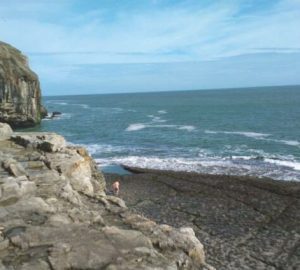Could better access to open water reduce drowning deaths?
I’m writing this while waiting for a flight back from Berlin. I’ve just spent a week in the Mecklenburgische Seenplatte, a region of more than 1,000 lakes and waterways that lies between the capital and the Baltic Sea. Thirty years ago these lakes were behind the Iron Curtain. They are now a holiday paradise for water lovers, including swimmers, and we will have more on this in a future issue of the magazine.
A big difference between Germany and England is that swimming outside is positively encouraged and supported. Instead of fencing off water and putting up signs warning people to keep out, every town or village (at least the ones I visited) with access to suitable water has a designated bathing site – sometimes several. These vary from a small patch of grass with a picnic table to larger facilities with slides, pontoons and changing facilities. The latter are occasionally lifeguarded; the smaller ones are clearly signposted that you swim at your own risk. They are not hard to find. Towns put up maps for visitors clearly showing the swimming spots and they are also marked on large scale cycling maps.
These swimming spots are mostly managed and maintained by local government. At one I found a sign with information on the water quality (excellent), average water temperatures during the bathing season (14.5 to 26 degrees) and hydrographic details.
None of the places we visited charges you to swim. They are used by families, groups of youths and older people. One spot we visited lay on a large forest-surrounded lake where motor boats were forbidden. Swimmers struck off in all directions with no qualms about swimming far from the shore. Most stuck to breaststroke – perhaps to better enjoy the views. There was no need (or desire) for marked out routes or timing chips. Meanwhile, children played in the shallow water near the shore.
Away from designated swimming spots, people still freely take to the water. Camping sites spill their patrons into the water. Boaters moor up wherever they find somewhere they like and plunge in. Being Germany, bathing costumes are distinctly optional in the more remote places. We came across swimmers alone in the middle of lakes and in narrow canals, seemingly heedless of the passing boat traffic, which always gives way to people in the water.
The point, surely, is that swimming outside is a normal activity for normal people rather than an extreme sport for fitness fanatics and eccentrics. At the same time, it hardly seems coincidental that Germany has produced some of the world’s most successful competitive open water swimmers including the recently retired Thomas Lurz (our open water hero in Oct/Nov 2013 issue) and Angela Maurer, who at 40 years old was still able to claim a podium finish at this year’s world championships in Kazan.
Seeing and experiencing outdoor swimming in Germany makes it even harder to understand the almost hysterical antagonism you frequently see to the same thing in England. I can’t believe our waterways are inherently more dangerous than those on the continent. And does a more relaxed approach to open water mean more people know how to swim sensibly and stay safe or does it result in more deaths? A WHO report on drowning indicates Germany has a slightly lower rate of drowning deaths (0.6 per 100,000 people per year – data from 2012) and the UK (0.8 per 100,000 per year – data from 2010) but the data don’t reveal the cause of drownings (for example, did drownings occur as a result of swimming or some other incident on or around water, such as boating or fishing). However, the implication here is that encouraging people to swim in open water isn’t harmful.
Meanwhile, if you’re looking for somewhere with almost endless open water swimming possibilities then Mecklenbergishce Seenplatte is just an hour’s drive from Berlin.
Image: map showing local swimming places around Himmelpfort, Germany.







